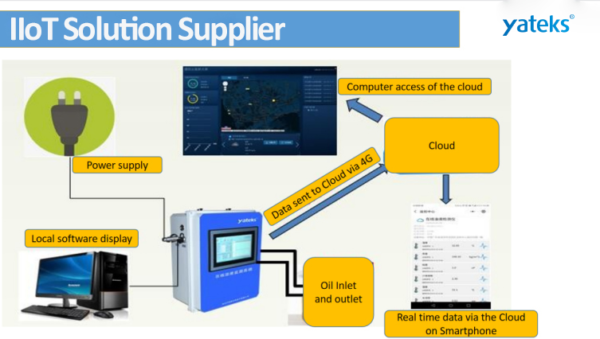-
What are the types of equipment lubricants?
The types of lubricating oil used in equipment mainly include the following categories:
- Hydraulic Oil: Used in hydraulic systems to transmit pressure and energy, and provide lubrication and sealing functions.
- Gear Oil: used in gear transmission system, lubricating and cooling gears, reducing friction and wear.
- Bearing Oil: Used in bearing systems, providing lubrication and cooling of bearings, reducing friction and wear.
- Compressor Oil: Used in air compressors to provide lubrication and cooling to keep the compressor running normally.
- Turbine Oil: Used in turbines and generator sets and other equipment to provide lubrication and cooling to reduce friction and wear.
- Refrigeration Oil: Used for refrigeration equipment, lubricating compressors and other moving parts, and keeping the refrigerator running normally.
- Vacuum Pump Oil: Used in vacuum pumps to provide sealing and lubrication to ensure the normal operation of the vacuum system.
- Ignition Oil: It is used in the ignition system to provide the lubrication and insulation properties required for ignition.
- Heat Transfer Oil: Used in heat exchangers and heat conduction equipment to transfer heat and provide lubrication and cooling.
- Insulating Oil: Used to insulate electrical equipment, providing insulation performance and heat conduction.
The types and specifications of lubricating oil required by different equipment will vary according to the working principle, load, temperature and environmental conditions of the equipment. Therefore, when choosing lubricating oil, it is necessary to choose according to the recommendations and regulations of the equipment manufacturer, as well as the working environment and requirements of the equipment.
-
What are the online monitoring systems for lubricating oil?
Lubricating oil online monitoring system is a device used to monitor the status and performance of lubricating oil in real time, so as to ensure the reliability and operation effect of the equipment. The following are some common online lubricant monitoring systems and their related information:
- Vibration monitoring system: By monitoring the vibration signal of the equipment, the number and size of particles in the lubricating oil and other indicators related to vibration are analyzed. The system can detect mechanical wear and failure of equipment, give early warning and take corresponding maintenance measures.
- Particle counting system: use laser scattering technology to detect the number, size and distribution of particles in lubricating oil in real time. By monitoring the particle pollution in the lubricating oil, the wear degree of the equipment and the effect of the filter can be evaluated, and treatment measures can be taken in time.
- Viscosity monitoring system: monitor the wear, contamination and dilution of lubricating oil by measuring the viscosity change of lubricating oil. The system can provide real-time data on lubricant performance and viscosity index to assess whether an oil needs to be changed or adjusted.
- Temperature monitoring system: monitor the temperature change of lubricating oil to help determine the working state and cooling effect of lubricating oil. Temperature anomalies can indicate a malfunction of the equipment or a problem with the cooling system.
- Acid value monitoring system: By measuring the acid value in lubricating oil, it can be judged whether the lubricating oil is affected by oxidation or pollution. The system can detect oil aging and acidification problems early to avoid damage to equipment.
The working principle of the lubricating oil online monitoring system is usually based on the synergy of sensors, instruments and data acquisition systems. Sensors and instruments are used to measure parameters of various indicators in lubricating oil, such as particle number, particle size, viscosity, temperature and acid value, etc. The data acquisition system is responsible for collecting and recording real-time data of these parameters for analysis and interpretation.
The lubricating oil online monitoring system mainly monitors the following indicators and their functions:
- Number and size of particles: Evaluate the degree of wear of equipment, judge the effectiveness of filters, and give early warning of mechanical failures.
- Viscosity: monitor the wear, contamination and dilution of lubricating oil
Interpret the situation and determine the working state of the lubricating oil.
- Temperature: To judge the cooling effect of the lubricating oil and the failure of the equipment.
- Acid value: detect the degree of acidification of lubricating oil, and evaluate the aging and oxidation of lubricating oil.
By monitoring these indicators in real time, the lubricating oil online monitoring system can provide timely equipment status information, help prevent equipment failures, optimize lubricating oil replacement cycles, and improve equipment reliability and life.

